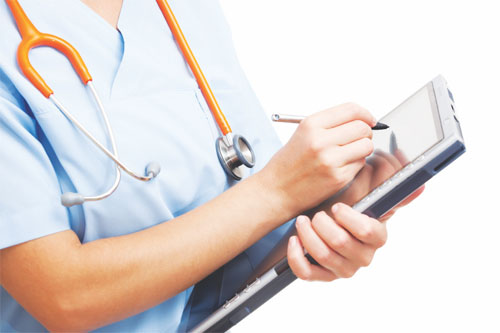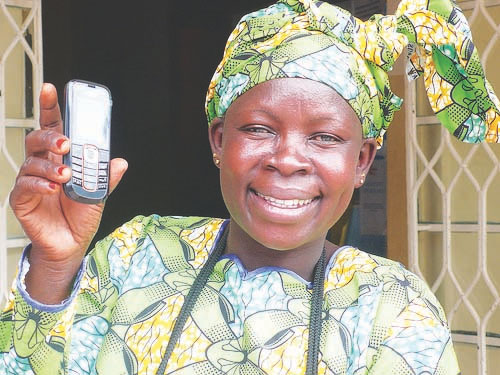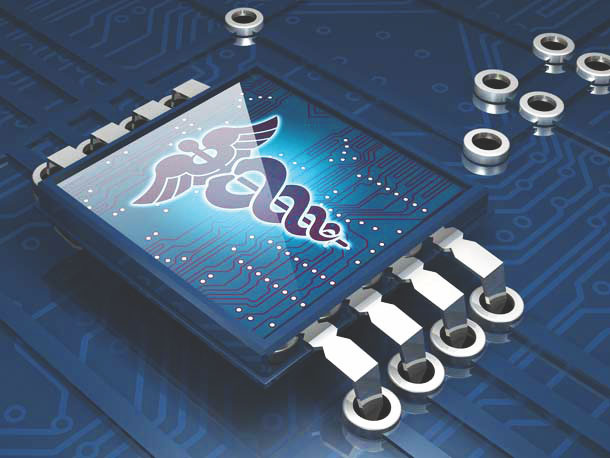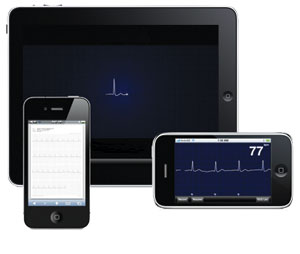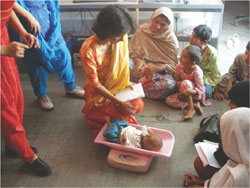
mHealth can embrace modern technology to widen healthcare accessibility in rural India and can be a solution for Indias healthcare woes. A vast country like India, with a population of over 2 billion across 28 states, 7 union territories and governed by a federal system, needs affordable healthcare
 mHealth can be understood as a term for collectively describing use of electronic information and communication technology in the healthcare sector. This refers to a technology used across the value chain in healthcare industry from clinical trials, education, research, and administrative purposes, both at the local site and across geographies or regions. It has the potential to improve efficiency in healthcare delivery, extend healthcare to rural areas, provide better quality of healthcare at a lower cost, enhance use of evidence-based medicine, stress on preventive healthcare, empower patients and consumers, and support to smooth relationships between patients and health professionals.
mHealth can be understood as a term for collectively describing use of electronic information and communication technology in the healthcare sector. This refers to a technology used across the value chain in healthcare industry from clinical trials, education, research, and administrative purposes, both at the local site and across geographies or regions. It has the potential to improve efficiency in healthcare delivery, extend healthcare to rural areas, provide better quality of healthcare at a lower cost, enhance use of evidence-based medicine, stress on preventive healthcare, empower patients and consumers, and support to smooth relationships between patients and health professionals.

PARADIGM SHIFT
In order to meet demand, healthcare will have to undergo a paradigm shift. It will witness massive convergence to tele-health and mobile health to fill the massive need gap. Whether it is large hospitals, small clinics or independent practitioners, tele-health would have to be adopted directly or indirectly in order to increase outreach, expand network and offer better services to patients. A telemedicine service provider provides advanced care in remote locations and increases the bandwidth to remote clinics with the help of WiMAX technology. In the rural areas, this service will be very beneficial. Another window to this point is remote surveillance and improving roadway safety. Understanding the needs, the Indian government has realised the importance of broadband and has made rollout of rural broadband a national priority.
INDIA STORY

Currently, in Indias three-tier government supported system for healthcare delivery, states have the primary responsibility of public healthcare. This results in significant disparity in quality and access to healthcare services in various regions within the states and even cities in India. The disparity is far greater between urban and rural regions in India. On the other hand, India is technologically advanced in the ICT sector and self-sufficient in meeting its needs of software, connectivity and services. Therefore, ICTs have the potential of making healthcare affordable for India, especially in rural India. This success can be further reinforced if these technologies are integrated into existing health-care delivery systems. In the last decade there has been active investment for development of mHealth in India but considering the demographic spread this investment is not sufficient for such a large country. The scale of mHealth services in India has been limited so far to medical transcription, health awareness through portals, telemedicine, and hospital management system and customer service using the internet. While globally and particularly in Africa, advanced technologies such as 3G services are used efficiently for providing healthcare solutions to remote villages, the use of communication devices such as mobile phones or conferencing solutions for mHealth in India has been limited.
RIDE THE TELECOM GROWTH WAVE
Prof. K. Ganapathy, President Telemedicine Society of India, and President, Apollo Telemedicine Foundation says, mHealth is more relevant in India than conventional eHealth, as access to PCs, laptops and broadband is far less than access to mobile phones just 12 million broadband connections, 24 million internet subscribers, 85 million PCs but 900 million mobile phones. Utilising wireless to access the internet is steadily increasing and telecom operators in India see this as a potential gold mine. He adds, The ubiquitous all pervading universally available mobile phone can now be used as a tool, an enabler to deliver healthcare to the haves and the have nots. There are unlimited opportunities and strategies for using the mobile in implementing mHealth in hospitals, insurance companies, pharma companies etc. With 50 mobile phones being sold every second, with an urban tele-density of 113 percent and a rural tele-density of 49 percent, we in India, should certainly be poised, to incorporate mHealth into the very fabric of our healthcare delivery system. mBanking, is taking off with 31 banks having 60 million urban customers (11 percent of the urban population use mBanking). Thirty five television channels can now be accessed on the mobile phone. This is just the beginning of m-entertainment. Todays PC based online shopping, will soon give way to mCommerce.
| ICTs have the potential of making healthcare affordable for India, especially in rural India. This success can be further reinforced if these technologies are integrated into existing health-care delivery systems |
MOBILE FOR HEALTH
Today, India has the right opportunity with 875 million mobile phone users, 1.55 lakh post offices, 2.38 lakh gram panchayats, 8 lakh chemists and 2.2 million SHGs spread across the nation. The optimum utilisation of these networks, involving SHGs and training them with point of care diagnostics connected to mobile devices for diagnosis and treatment, will help deliver a cost effective and an impactful primary healthcare system for rural India.
Satnam S Bains, Managing Director, Sero Solutions says, The opportunity for mHealth has been stimulated by a number of factors, which include technological innovation relating to systems integration, improvements in wireless networks, mobile handset innovations, and the continued growth of mobile phone subscribers. There are a number of mHealth solutions that are in use in the marketplace today, application types include mobile access to medical records, adherence applications, medication compliance, chronic disease management solutions, as well as general wellness applications including health surveys and data collection. The adoption of mHealth globally has initially been based around healthcare information and alerting using SMS as a medium, this has a proven model in India, however with the emergence of smart phones this traditional model is going through some rapid change.
Potential key applications of mHealth include education and awareness generation, remote data collection, communication and training for healthcare workers, disease and epidemic outbreak tracking, diagnostic and treatment support and remote monitoring. Access to technology, end user and healthcare provider acceptance, lack of regulatory issues, logistics and availability of appropriate, need-based, customised solutions are some of the major challenges in the way of widespread utilisation of mHealth. As per an estimate, there are at least 20 active mHealth pilot projects in India being carried out by some state governments and NGOs as part of mGovernance initiatives. A few sporadic projects have been carried out by others as well. They include use of mobile games to enhance HIV/AIDS awareness (10.3 million game sessions were downloaded in 15 months). Handheld devices were used to collect raw health data which were transmitted in real time to the health information system database. Disease and epidemic outbreaks have been tracked and daily health alerts have been sent to subscribers for nominal charges.
CHALLENGES
The explosion of technologies in the last five years has witnessed an upgradation in the communication technology, which has helped to position India amongst the BRIC (Brazil, Russia, India and China) globally. The adaptability of 3G, WiFi has shown a positive acceptation to WiMAX. These services are said to overcome the limitations of the rural spectrum allocation. The wireless broadband services also help the urban population to stay connected through their mobile broadband. This system of WiMAX is different from that of commonly known GPRS and 3G technology. These two services are designed specifically for the voice and data transfer whereas WiMAX is a separate forum similar to the Wi-Fi mesh. It is also a difficult task to get consumers to adapt to new technologies in urban and rural sectors. When compared to the 3G technology the condition of technical support is different for WiMAX technology. The technical support system of 3G is expensive and is available in limited handsets. These services provide varied opportunities to address enterprise mobility in sectors like transportation, aviation, and manufacturing. It is also a difficult task to get consumers to adapt new technologies in urban and rural sectors. When compared to the 3G technology the condition of technical support is different for WiMAX technology. These services thus offered provide varied opportunities to address enterprise mobility in sectors like transportation, aviation, and manufacturing.
FUTURE OUTLOOK
It is nearly impossible under the current rural infrastructure and payment terms to get good doctors to work in rural India. In addition, building healthcare facilities and maintaining them in rural India is financially unviable. So, it will always be an ad hoc and a highly subsidised arrangement, which is not sustainable. Rural India needs to extensively leverage the 3G and WIMAX technology and adopt preventive care model to avoid pain, suffering and high cost of healthcare. As Dr P S Ramkumar, Director, Applied Cognition Systems says, Practically mHealth will take time, although the concept is easy to sell due to large scale user friendly nature of mobile phones. Although mobile communication has equipped the country with more than 800 million phones, a recent survey has found that out of 30 Tele-Health projects only two had intersected with mobile phones while 60 percent used free satellite connections provided by government initiatives. Speaking from a global perspective, Michael Setton, CEO, Sensaris says, With the arrival of low cost smart phones in the market, we believe that the market is poised for takeoff in emerging countries. In the western world, the majority of medical professionals seem to change averse and additional regulations regarding software will be a major obstacle for fast diffusion of mHealth.
Be a part of Elets Collaborative Initiatives. Join Us for Upcoming Events and explore business opportunities. Like us on Facebook , connect with us on LinkedIn and follow us on Twitter , Instagram.





